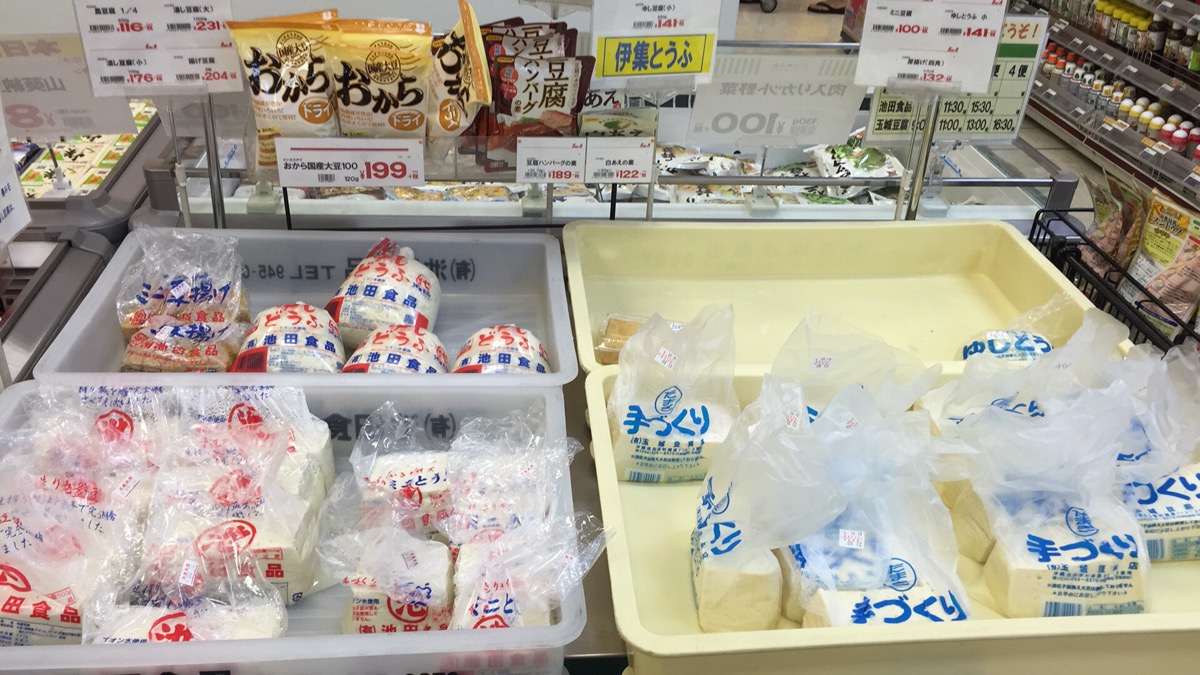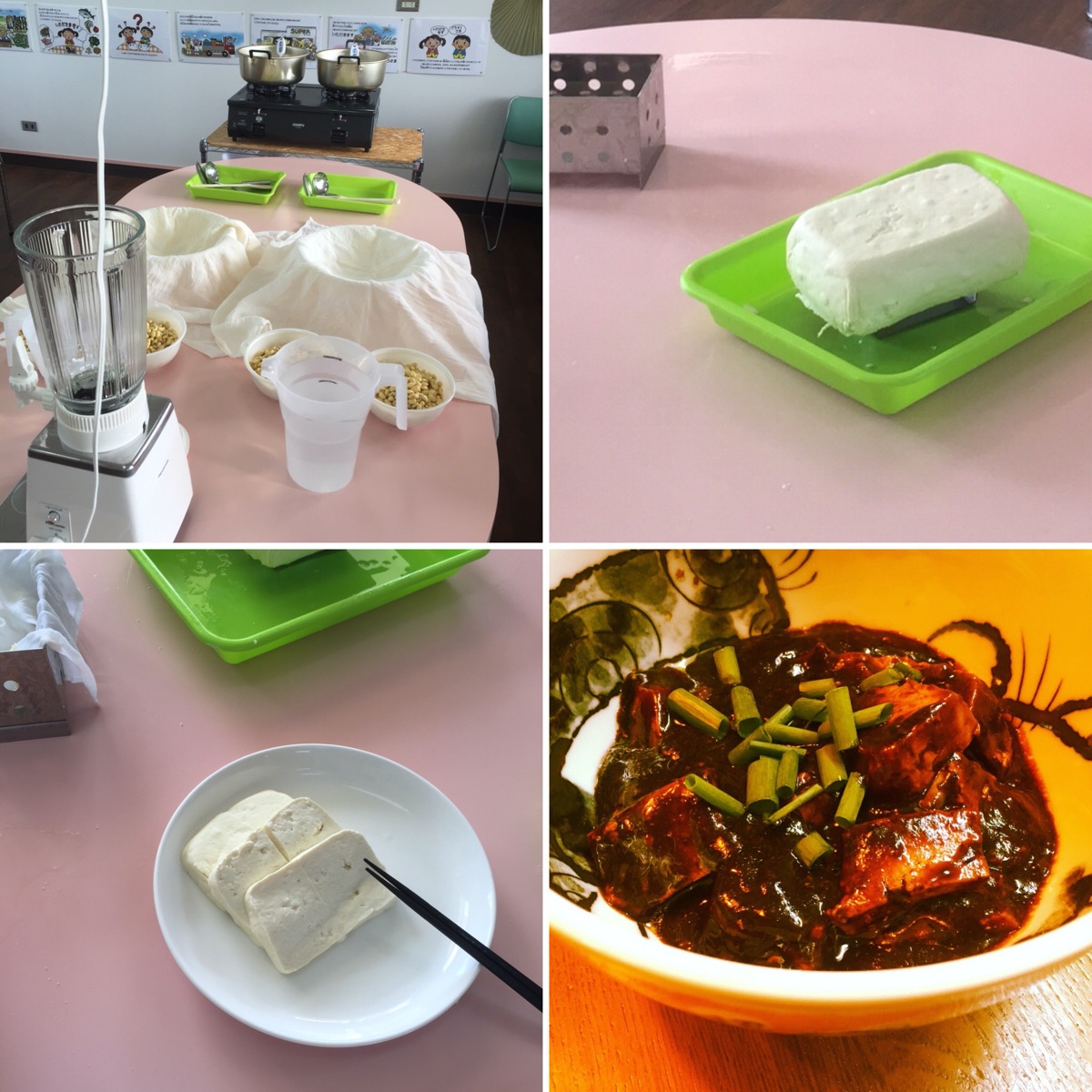Yushi-doufu is island (shima) tofu still in the liquid. It is fluffy and not pressed or formed. You can buy it at any grocery store in Okinawa, sold warm in plastic bags next to the other shima-doufu.
To eat it, it is usually just eaten in a bowl garnished with some green onion and maybe some shoyu. Sometimes it will be added to miso soup or bonito/konbu broth. The yushi-doufu has a rice soy flavor you do not normally see in regular tofu dishes.
Many Okinawa soba (suba) restaurants will serve it as yushi-doufu soba. Okinawa noodles and yushi-doufu are served up in a pig bone broth soup, with simmered pork cartilage (called soki ソーキ), fried eggs strips, and konbu.
Yushi-doufu is uncommon to find outside of Okinawa, so it is a must-try whenever you visit. I think one of the most important things you must try in Okinawa is yushi-doufu; it shows the how amazing tofu can taste, completely different from the pre-packaged kinds from the regular grocery stores. For people who claim to not like tofu, I think they should all try yushi-doufu, and it may very well change their views.

